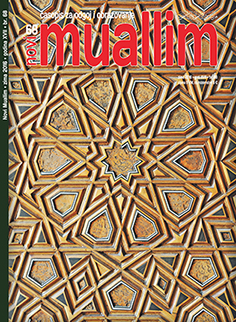GRAMMATICAL AND STYLISTIC ASPECTS OF DU’A IN THE QUR’AN
DOI:
https://doi.org/10.26340/muallim.v17i68.1372Keywords:
Qur’an, du’a, grammatical style, supplication sentences, syntactic semantics, grammatical and stylistic featuresAbstract
UDK 811.411.21'36'38:28-23
Sentences by which we express a supplication to Allah are often given, for the sake of achieving stylistically more effective expression as well as for some additional meaning, in the form in which the inner structure of the sentence differs from its common structure. This is most often achieved through the change of the order of the words (taqdīm wa ta’ẖīr), corroboration (ta’kīd) of words, phrase or all of the sentence, or by elision of a part of the sentence (ḥaḏf), use of words in determined or undetermined mode (ta‘rīf wa tankīr), restriction (qaṣr), concision (īğāz) and finally prolixity (iṭnāb) in expression. Besides, supplication sentences as such have particular grammatical and stylistic features of their own expressed by a manner in which they line up to form a longer supplication, that may be without conjunction (fasl) or with conjunction wa (wasl). These syntactic and semantic features that are referred to as grammatical styles (asālīb naḥwiyya) as well are also characteristics of the language of the Qur’an as they appear in the Qur’anic supplications. Thus the main meaning of the expression is preserved, style is more effective and the du’a is better understood. This article relates primarily about these grammatical and stylistic features as a particular inner characteristics of the Qur’anic du’a as a specific kind of supplication.
Downloads
Published
How to Cite
Issue
Section
License
Naknada:
a. Časopis ne naplaćuje naknadu za obradu članaka (APC) i naknadu za podnošenje članaka.
Autori koji objavljuju u ovom časopisu pristaju na sljedeće uvijete:
- Autori zadržavaju autorska prava i pružaju časopisu pravo prvog objavljivanja, pri čemu će rad jednu godinu po objavljivanju biti podložan licenci Creative Commons imenovanje koja omogućuje drugima da dijele rad uz uvijet navođenja autorstva i izvornog objavljivanja u ovom časopisu.
- Autori mogu izraditi zasebne, ugovorne aranžmane za ne-ekskluzivnu distribuciju rada objavljenog u časopisu (npr. postavljanje u institucionalni repozitorij ili objavljivanje u knjizi), uz navođenje da je rad izvorno objavljen u ovom časopisu.


